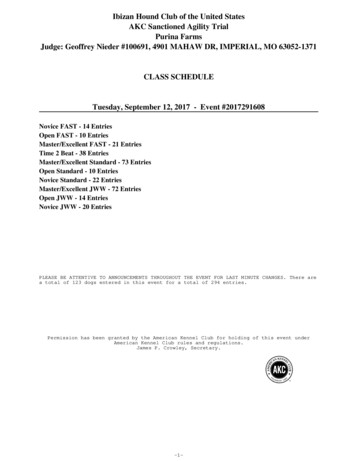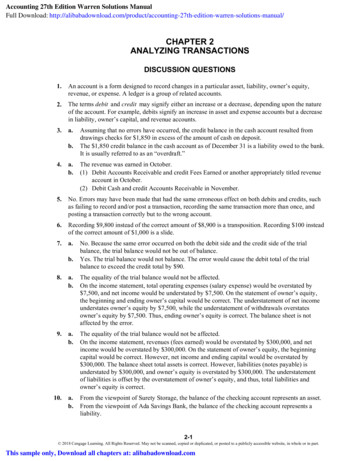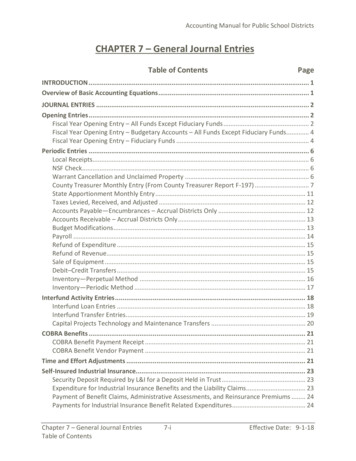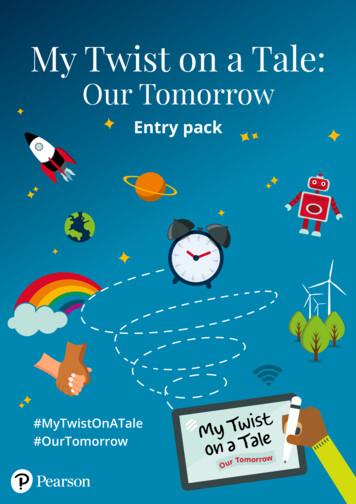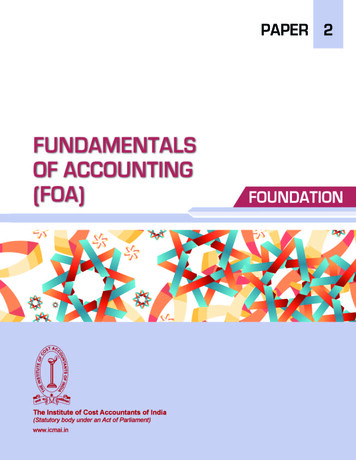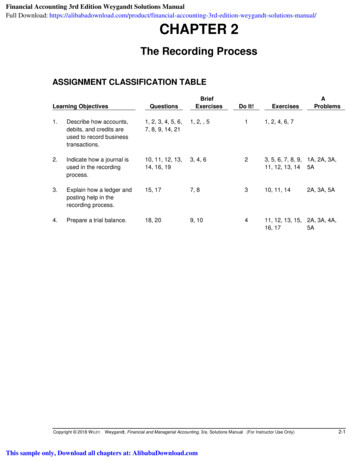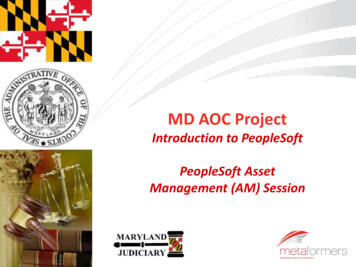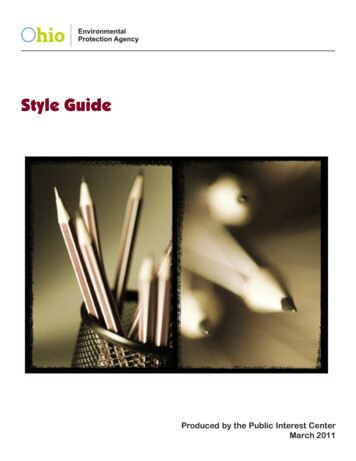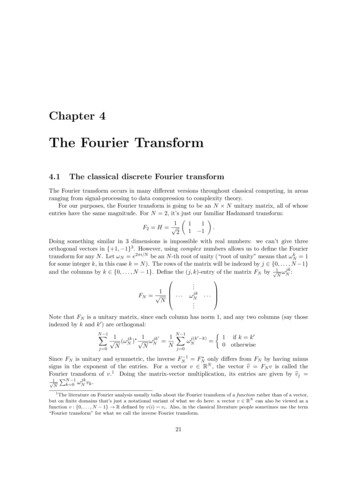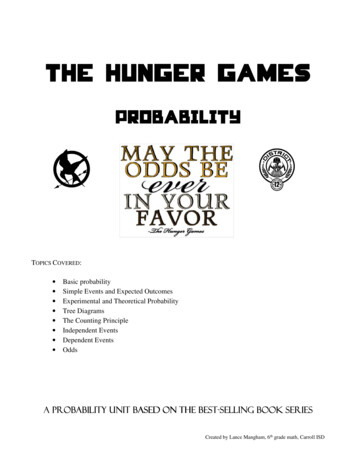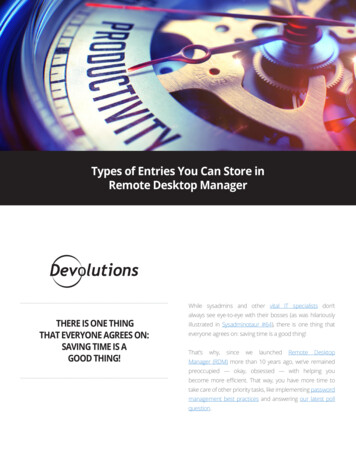
Transcription
Types of Entries You Can Store inRemote Desktop ManagerWhile sysadmins and other vital IT specialists don’tTHERE IS ONE THINGTHAT EVERYONE AGREES ON:SAVING TIME IS AGOOD THING!always see eye-to-eye with their bosses (as was hilariouslyillustrated in Sysadminotaur #64), there is one thing thateveryone agrees on: saving time is a good ger (RDM) more than 10 years ago, we’ve remainedpreoccupied — okay, obsessed — with helping youbecome more efficient. That way, you have more time totake care of other priority tasks, like implementing passwordmanagement best practices and answering our latest pollquestion.
WHAT TO STORE IN RDMTo make sure that you’re saving the most time possible in your hectic day,here’s an overview by entry type of the information you can easilyadd in RDM and access anytime you need it.ENTRY TYPE : SESSIONSRDM separates sessions into 4 sub-categories: Remote Connections,Virtualization, Cloud Explorer, and Other. REMOTE CONNECTIONSRemote connections are used to connect to remote systems, including computers, switches,Servers, printers, etc. RDM currently integrates with many remote desktop and remote supporttools, as well as many protocols, such as: Microsoft Remote Desktop, Microsoft Remote Assistance,pcAnywhere, TeamViewer, VNC, Putty (SSH), and the list goes on. VIRTUALIZATIONVirtualization connections include local virtual machine tools and server tools. RDM supportsseveral virtualization solutions, including tools from Microsoft, VMware, Oracle and more. CLOUD EXPLORERCloud Explorer entries are used to connect to public object storage repositories like AmazonS3 Explorer, Azure Storage Explorer, Azure Table Storage Explorer, Dropbox, OneDrive Explorer,Google Drive, etc. OTHERAs you hopefully know, we’re always integrating more tools into RDM (and many of them are theresult of feedback and suggestions from our community). When a tool doesn’t fit any of the abovesub-categories, it goes into “Other”. Here’s a snapshot of what you’ll find in this (constantlygrowing) category:2
ENTRY TYPE : INFORMATIONThe information category was created to keep your sensitive data safe.This is where you can store data like: Alarm Codes Credit Cards Numbers Bank Information Web Logins (company account credentials) Serial Numbers OtherWhile all of these entries are important, the most popular is Web Logins. You can link entries in herewith Devolutions’ Web Login browser extension, and automatically login to your frequent/favoritewebsites in seconds.3
ENTRY TYPE : CONTACTSThe contact category is where you can store the vital details for yourcontacts, including names, addresses, phone numbers, email addresses, andmore. To help keep things organized, we’ve created 7 types of contacts:Company Customer Default Employee Family Supplier SupportENTRY TYPE: CREDENTIALSThe credentials category is where you can securely store all of your usernamesand passwords. You can either use the password manager included in RDM oryour favorite password manager. If you don’t know which one to use, then I wouldrecommend reading my colleague Jenny’s excellent article that compares the mostpopular password managers — you’ll find it here.ENTRY TYPE: DOCUMENTSThe documents category is where you can store any type of document directlyin the data source, such as:Emails HTML Office Documents PDFs Videos and morePlease note that for an architectural reason, documents stored in RDM’s advanceddata sources can’t be restored if deleted. As such, you should keep a copy onanother device just in case.ENTRY TYPE: kinginateamenviron-ment. Synchronizer entries let you keep RDM in sync with an external data source (i.e. it will create sessions based on information obtainedfrom the source). Entries in this category include Active Directory, CSV,Hyper-V, ScreenConnect, SpiceWorks, VMWare, and so on.4
ENTRY TYPE : VPNsYou can easily create VPN entries to configure a VPN session, as well as sharethe VPN across multiples entries. RDM integrates with the most popular VPNtechnologies like Apple VPN, Microsoft VPN, SSH and more, so there is plenty ofchoice. Plus, we’re always adding more integrations.ENTRY TYPE: SCRIPTS/MACROS/TOOLSSession script tools can be a script, a command line, or a helper app tied to aselected session. Each entry can be configured and shared in the data source.Session tools are commonly used to retrieve information, perform an action,change an item, or change a configuration on the session host. They can also beused to share properties between groups of sessions using PowerShell, PSExec orkeyboard macros. In addition, Macros/Scripts/Tools can be used to run against ahost, and you can run your macro through the RDM Agent.ENTRY TYPE: FOLDERS AND SUBFOLDERSEntries can be sorted into folders and subfolders, which makes things even easierand faster. For an overview of RDM’s folder structure, check out this great blog post.MORE ON THE WAY!We’ll be posting more blogs in the near future that focus on helping you getthe most value out of RDM. Even if you’ve been using RDM for many years,there might be some new and useful things for you to learn. Stay tuned!5
RDM separates sessions into 4 sub-categories: Remote Connections, Virtualization, Cloud Explorer, and Other. REMOTE CONNECTIONS Remote connections are used to connect to remote systems, including computers, switches, Servers, printers, etc. RDM currently integrates with many remote desktop and remote support
